| Midsize car; Built in USA |
|
|
| Good condition price range: $1,500 – $3,400* |
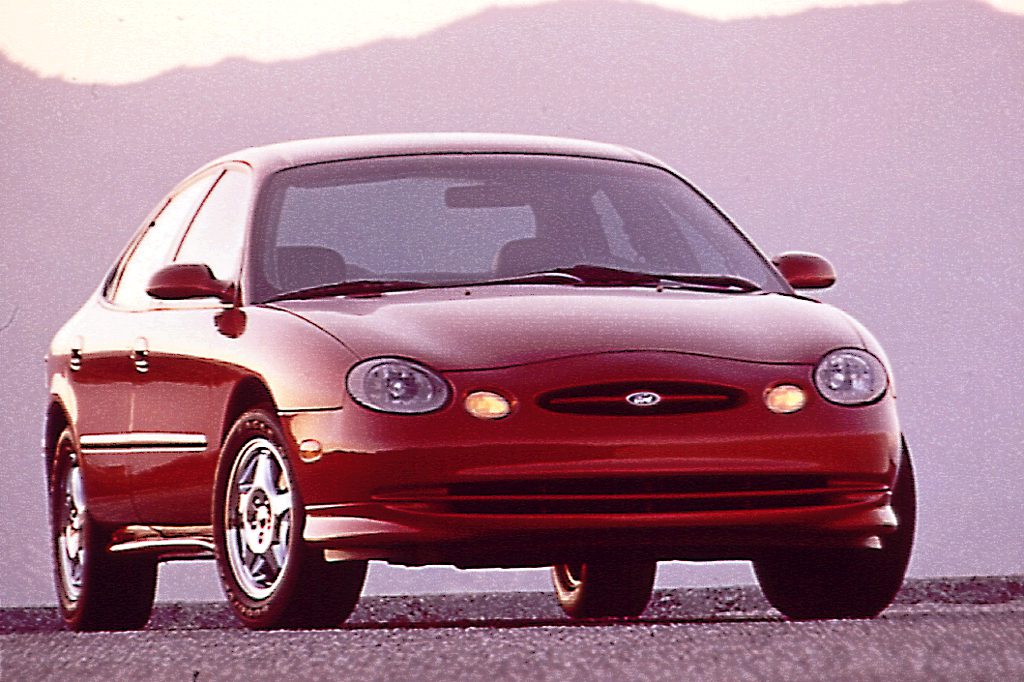
1997 Ford Taurus SHO 4-door sedan
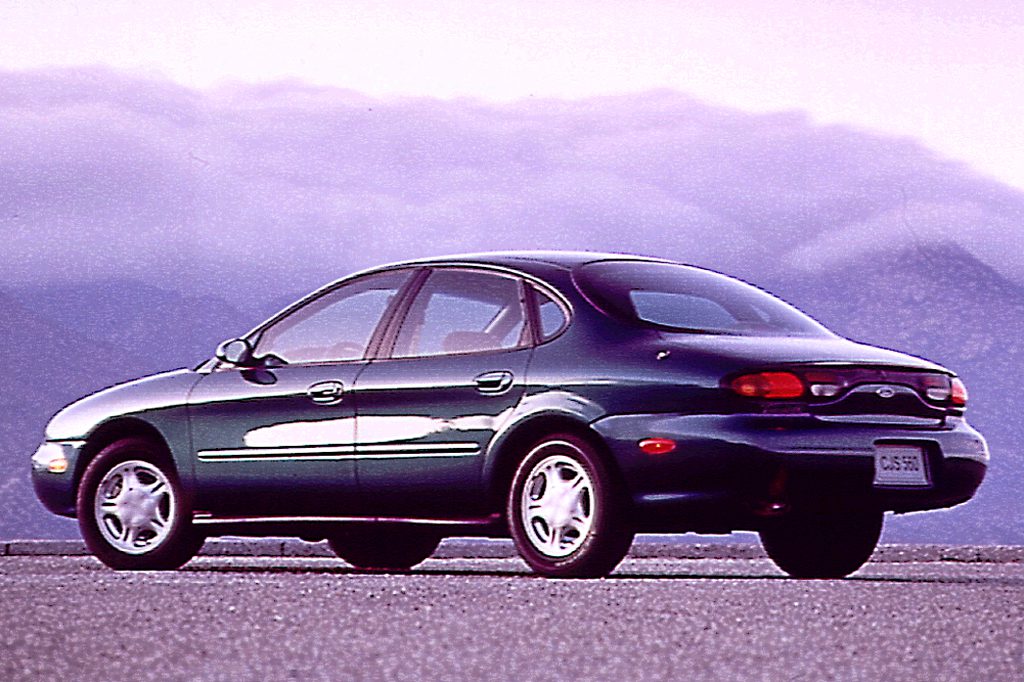
1996 Ford Taurus 4-door sedan
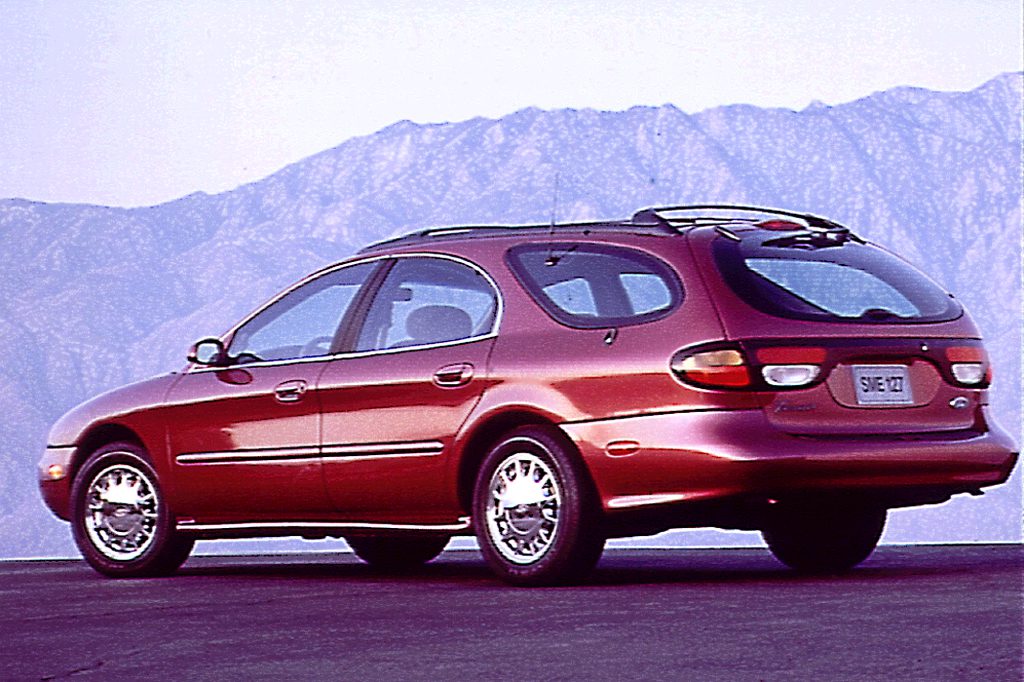
1996 Ford Taurus 4-door wagon
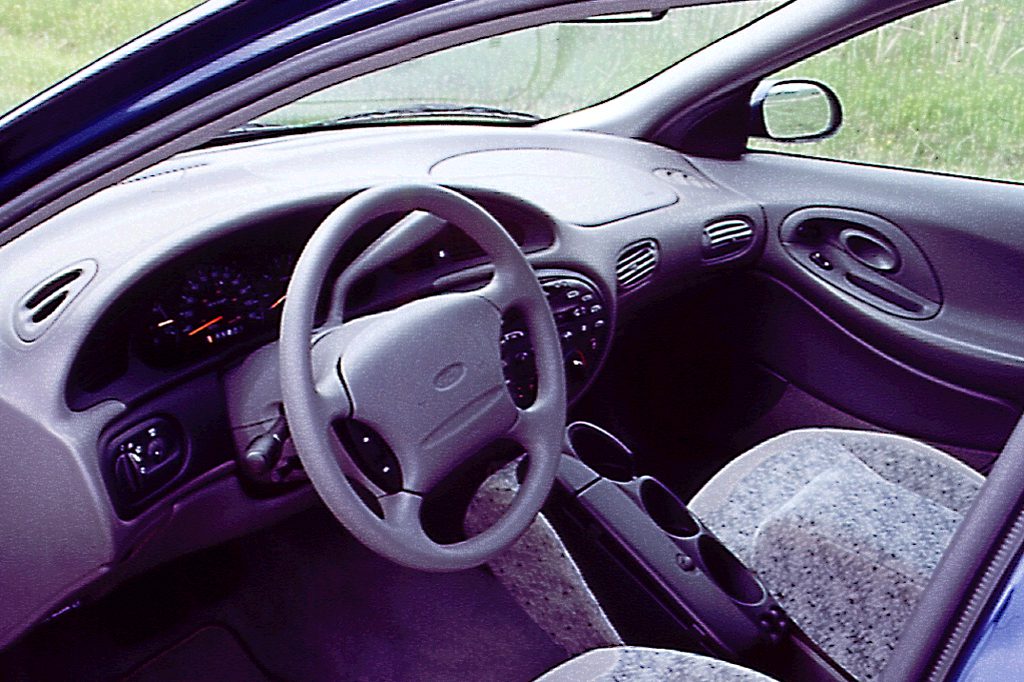
1996 Ford Taurus interior
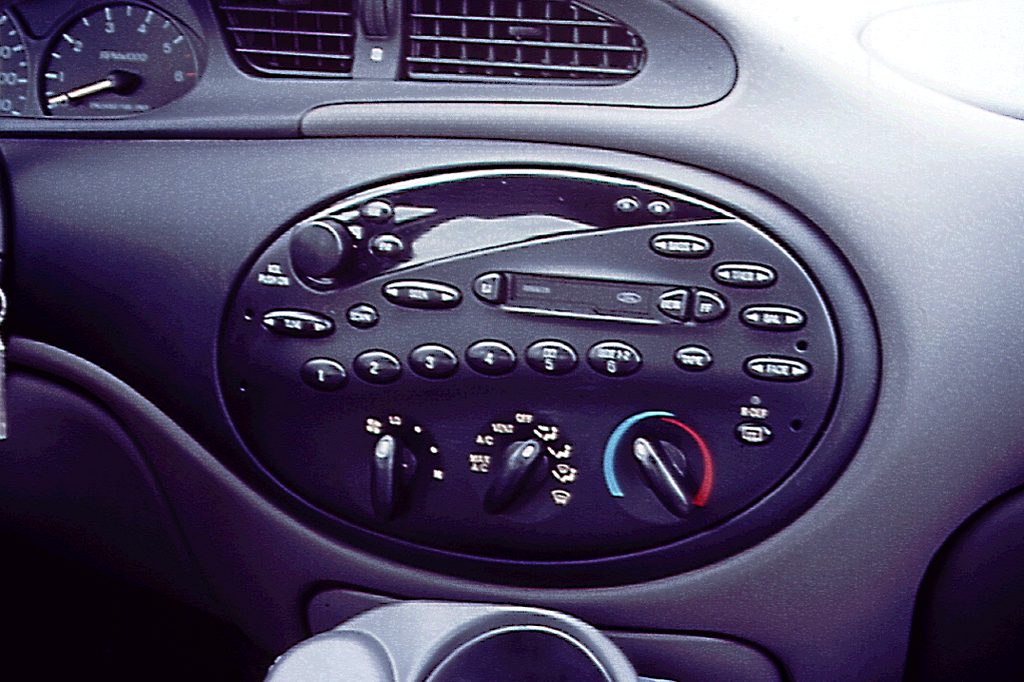
1996 Ford Taurus interior
| Pros: |
|
| Cons: |
|
Though not perfect, Taurus is roomy, well-built, and enjoyable to drive. Prices went up for this generation, but Tauruses remained a good value and an excellent choice, new or used.
Overview
America’s best-selling car earned its first full overhaul for 1996, adopting a stunning shape. So did the similar Mercury Sable. Both mid-sizes were larger and more rounded than their 1986-95 predecessors. Wheelbase grew by 2.5 inches, to 108.5, while overall length increased more than five inches on the sedan and nearly six on the station wagon. Both the 4-door sedan and 4-door wagon came in GL and deluxe LX trim. The GL held an overhead-valve 3.0-liter V6 engine, rated at 145 horsepower. The LX got a new dual-cam 3.0-liter Duratec V6, which produced 200 horsepower. Both used a 4-speed automatic transmission. Dual airbags were standard; antilock all-disc brakes optional on all models. An oval “integrated control panel” on the dashboard contained radio and climate controls.A low-budget G sedan joined during the 1996 model year, with the same engine as the GL. So did a new high-performance SHO sedan, holding a 235-horsepower, 3.4-liter dual-cam V8 and standard antilock braking.
Yearly Updates
| 1997 Taurus Only a handful of changes marked the ’97 models. Mainly, a Mach Audio System replaced the former JBL setup as an option. |
| 1998 Taurus G and GL editions were gone, and an SE sedan and wagon arrived for ’98, as Taurus gained a more assertive front end. The more powerful V6 engine was now optional on the LX and SE. |
| 1999 Taurus All models got revised instrument cluster graphics and front bucket seats were standard on LX and SE (a front bench remained a no-charge option). Sluggish sales prompted Ford to reskin the Taurus for 2000, with a more conventional shape. |
